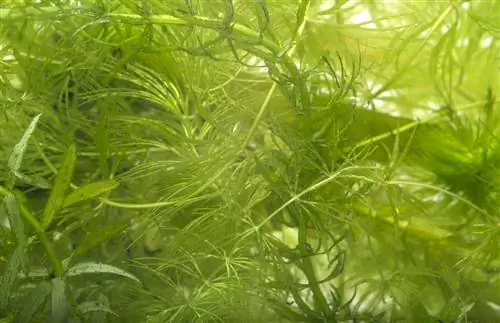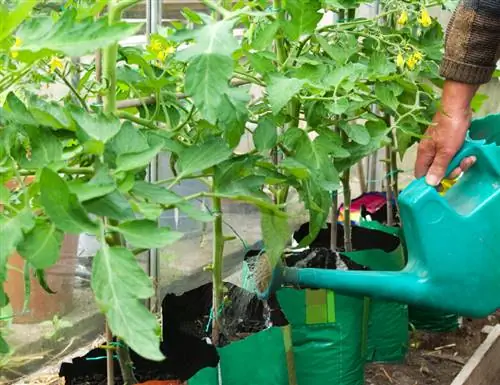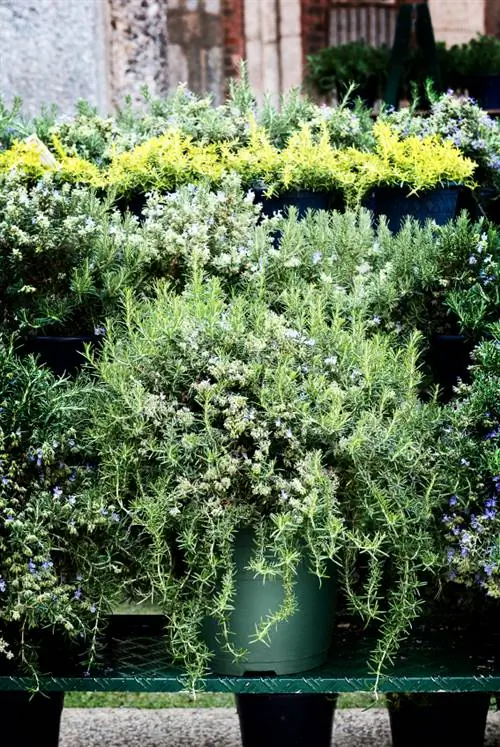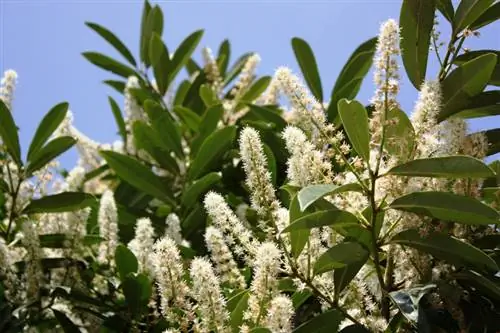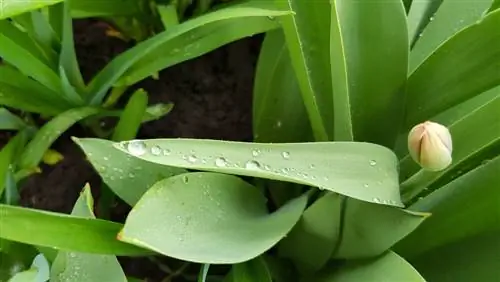- Author admin [email protected].
- Public 2023-12-16 16:46.
- Last modified 2025-01-23 11:22.
Waterweed grows so rampant under ideal living conditions that the use of scissors is unavoidable. Otherwise, the disadvantages resulting from its spread may outweigh the undoubted advantages of this plant. This is how cutting is done correctly!
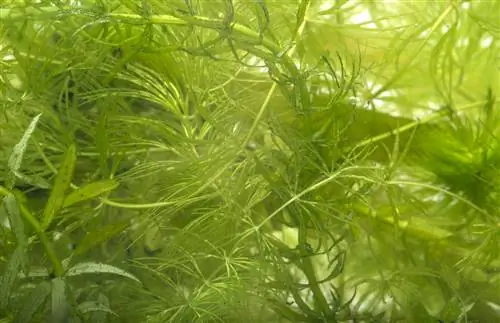
What is the best way to cut waterweed?
To cut waterweed correctly, set a maximum growth range, remove excess plants including roots, thin out shoots and shorten them if necessary. Use sharp plant scissors and, if necessary, get animal or plant support.
Set maximum growth range
When cultivating waterweed, whether in an aquarium or a pond, there must be a growth limit that this plant should not exceed. Then other plants are shaded by it and pushed out of space.
You can individually determine how far your waterweed can spread. For example, it depends on the size of the pond or aquarium and what other plants grow in it.
In any case, don't forget to cut the waterweed in time. If the plant has already spread significantly in a large pond, it can no longer be controlled so easily.
Remove, thin out and shorten
Whenever the waterweed has grown more luxuriant than you would like, its volume must be reduced. Several options exist and can be carried out individually or in combination.
- Remove entire plants including roots from the water
- thin out excess shoots
- shorten remaining shoots if necessary
In the aquarium, these measures can be carried out regardless of the season, while outside it is during the growing season. Be careful so that parts of the plant do not break off and fall into the water. After a short time, new plants will develop, which is counterproductive.
Use sharp plant scissors
Use only sharp scissors for any pruning as they will leave clean, smooth cuts that will heal well. However, if a shoot is pinched off by hand, it often does not sprout as desired.
Animal and plant support
Herbivorous fish such as the rudd like waterweed as food and thus slow down its spread. Planting the waterweed together with the aquatic plant hornwort also slows down its growth because both are nutrient competitors. With these two measures you can make care easier because they reduce the number or extent of necessary pruning.

